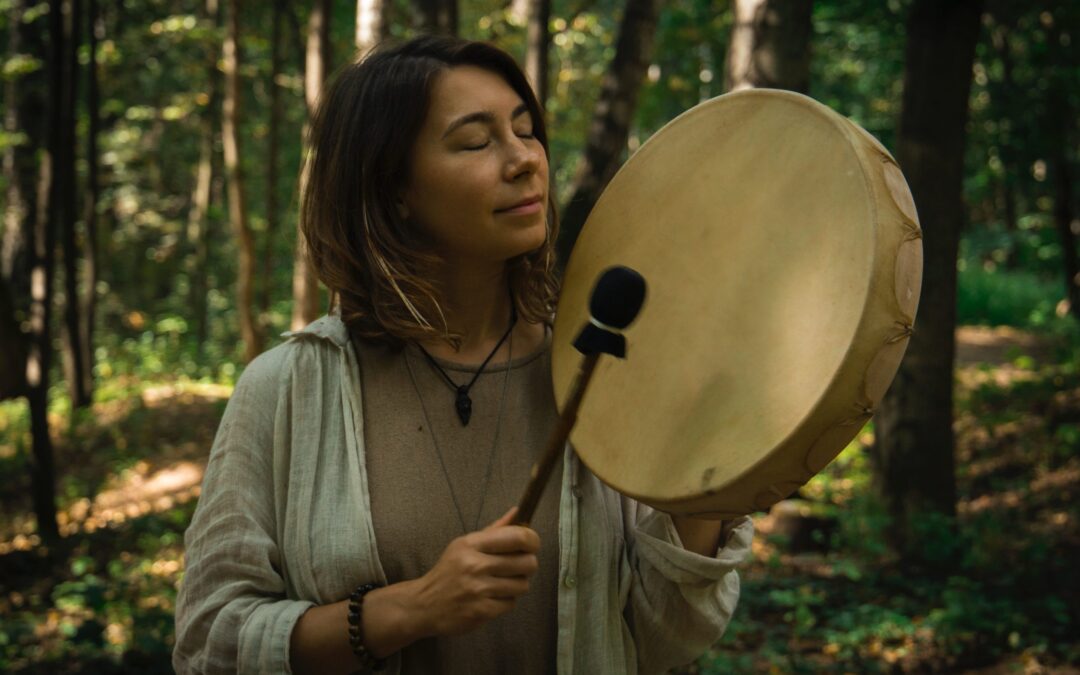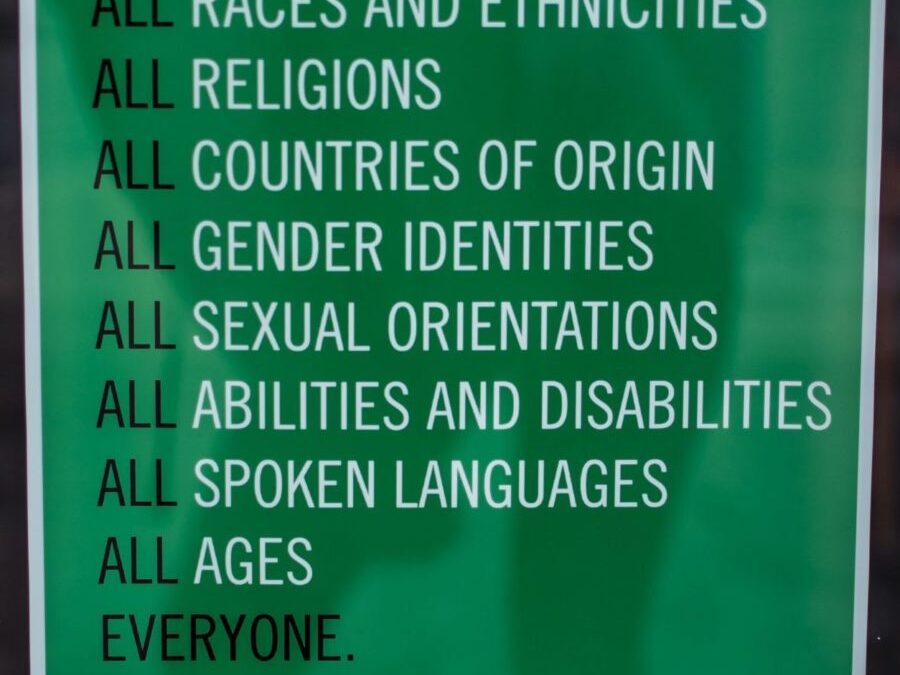
by user_dd | May 6, 2022 | Community Conversations
Here we are, entering into the season of celebrating our Mothers, amidst all the birth and renewal of Springtime. So, it’s a perfect time to take a look at our underlying assumptions that drive our values and ways of being. Specifically, with regard to the archetype of Mother, and what that may mean within a larger cultural context.
Archetypal Understanding
First, let’s dive into what we really mean when we speak about the Mother Archetype. According to Carl Jung, the archetype of the Mother is first developed within the early childhood psyche. For him, he saw the maternal, motherly ideals as projections onto one’s primary caregiver (regardless of whether or not that individual is one’s biological mother). In sum, Jung established a sense of early childhood awareness of the archetype as one that provides sustenance, care, loving attention and comfort.
In essence, the Mother archetype encompasses all that cherishes and fosters growth, sustains and nurtures life, and breathes attentive awareness toward the surrounding environment.
Assumptions
So, now that we have a more solid understanding of the Mother archetype, let’s go deeper still. What’s beneath all this? If you haven’t gotten the sense from our blog posts yet, we like to navigate the subconscious and bring what’s in the dark out into light. By illuminating some of the beliefs around the Mother, we can work to dismantle the part of us that takes the archetype for granted.
By bringing this out into the open, my hopes and intentions point toward the embodiment and empowerment of Divine feminine energy through a deeper, nuanced understanding. The truth is that many folks have misunderstood the feminine. Through an irrational deduction, folks have generally equated the yin and yang to passive and active. The feminine being the former and the masculine being the latter. Many regard ‘being in your feminine’ as being soft and caring, gentle and unobtrusive.
Altruistic and Holistic Augmentation
In actuality, the feminine couldn’t be further from passive. It’s time we clear some things up. There’s been a big mixup and we now get to augment our understanding. Being ‘in your feminine’ is hardly a passive thing. It requires a lot of energy to be receptive and aware enough to hold a container. Cultivation of this receptivity can take years of refinement and discipline. There is nothing passive about this receptivity; while the feminine is often less associated with ‘action’, there is indeed an action done while holding a container. There is a need for deep work, observation, sense making and continuous calibration in real time.
So, after a brief skim on the surface, how does this feel? Do we think we can adjust our baseline understanding of the feminine Mother archetype? Perhaps we can depart from the active/passive dichotomy and move into recognizing the energetic exchanges that are actually at play. Only then can we truly encounter the depth of love and active compassion the Mother archetype of the feminine has to share.

by user_dd | Apr 26, 2022 | Community Conversations
Shamanism is all about relationships. In this post, we’re going to explore what a shaman is, what role shamanism has played in different cultures around the world, and lastly, how a shamanic perspective can be integrated into your life.
So, what is a shaman?
Tracked back to the late 17th century through Russian etymology, the term shaman most likely originated in North Asia, where the Manchu-Tungus language described a personified version of the verb ‘to know’ (sa); the shaman is ‘one who knows’. Now, you may be thinking…the one who knows what? Perhaps we can think of it as the one who knows what we may not know.
What sorts of folks are there in your life that you look to for something you do not ‘know’? Perhaps a mechanic, or a doctor…you could think of anyone that you go to with trust. You trust that they know something that you do not. Now, when thinking of someone like this, there are aspects of training and experiential wisdom that are essential to trust building. This experiential wisdom, across pretty much every culture, looks like deep service in healing work for their communities.
Shamans are found in many different traditions, spanning across each continent, often sitting at the intersection of healing, arts, medicine and ritual. Within many traditions, we see correlations between shamanism and community health; bridging art into medicine and healing into ritual can make a big impact on a culture.
So, back to relationships. Bridging these oftentimes segmented and compartmentalized portions of society is the work the shaman does. Why? Because it’s important to understand (and tend) the relationships between and amongst all things.
The Here & Now
Alright, so maybe now you can feel more of a sense of what a shaman may be, and what role they’ve served their communities. Other than being vital contributors to the health of their community ecosystems, shamans are super connectors. They bridge realms, through and amongst dimensions, between and across species, and within many timelines. This is a way of being in relationship.
Is there an animal spirit that you feel a strong connection to? How could you strengthen this relationship? Perhaps it’s drawing the animal, or doing a dance to embody the feeling that this animal evokes in you.
At the end of the day, we are at a point in human history where it’s important for us to trust ourselves. We can begin to start sourcing internally what we’ve traditionally outsourced because we hadn’t invited our innate gifts to come fully online.
The time has arrived to empower our inner knowing, so that we can walk through life in the right relationship with the part of us that ‘knows’. In essence, there is an aspect of us that is shamanic, and that has shamanic abilities. It’s time to invite ourselves into trusting what comes through, feeling empowered by our inner knowing, staying surrendered to the fact that oftentimes the more we know, the more we know that we don’t know…
Humility is key, let’s keep expanding, friends!

by user_dd | Mar 17, 2022 | Community Conversations
Many of us may be interested in the esoteric and curious to learn more. Yet, what is esoteric study anyway? What makes something esoteric? Let’s explore this together. There are some intriguing insights to unravel.
Put simply, anything that’s esoteric is oriented toward the ‘inside.’ We’re talking about going inward, turning our gaze within, and embarking on the individual journey toward inner understanding. Throughout human history, esoteric knowledge has been preserved for those that are initiated into this type of study. For, with great power (which esoteric understandings innately distribute) comes great responsibility.
So let’s talk about this for a moment—this concept of power and responsibility. These principles must reach an equilibrium, in order for a given system to be in balance. When we look at the microcosm of the personal experience, we are (through this lens) invited into awareness around our own power. When we train and orient ourselves toward expansive teachings rooted in the esoteric arts, we are bestowed the responsibility of protecting these secrets by using the ability to respond to any given moment with grace and integrity. For years, we’ve protected that which is sacred by keeping it a secret… Yet now is the time of No-More-Secrets, and we have a responsibility within this process, at this time. Chances are, if you’re intrigued by esoteric teachings, you likely have a role to play in their preservation.
Walking the Walk
It’s not only learning about esoteric principles. Bringing that which is secret out into the open through action comes with great responsibility. It’s important to apply what you’ve learned and walk with integrity. This takes a strong degree of humility; one must be honest with oneself to understand how deeply our thoughts, words and actions are aligned with the highest good. Moreover, we must be honest with ourselves about how and where we are led astray, and utilize the tools we’ve acquired through knowledge to bring ourselves back on track.
Most importantly, we remain gentle with ourselves on the path we walk, continuing to nurture our curiosity toward that which is ready to be revealed.
Apply the teachings
Course correction along our journey is where conceptual development meets embodied expression. Bringing what’s secret, under cover, or concealed into the light, so it can be shown and shared in service to the highest good of all involved.
There’s a gift in every shadow. Sometimes we have to traverse some choppy waters or rocky roads. It’s essential that we cultivate trust and different practices that help to alchemize the densities in our mindset into a lightness of being.
We’re at the end of an epoch, friends. The age of information is here AND it’s the time of No More Secrets! It’s all available for the ear to hear. The question is…will you choose to dive in? Will you get uncomfortable and flow into the deep, beneath what distractions ride on the surface?

by user_dd | Feb 28, 2022 | Community Conversations
So if you’ve been noticing, there’s a massive collective shift going on. Atop our precious little spinning rock floating in space, we’re experiencing energetic changes that aren’t difficult to see and feel. These shifts that are happening are personal, global, planetary and utterly cosmic. Of course, how we relate to these shifts is an essential aspect of how well we can adapt to them and embrace the newness that continues to arrive.
The irony dwells in the space that brings balance to tradition and newness. How can we stay true to what’s been, in order to align ourselves with all that’s coming? How can we preserve the traditions that have sustained us, while also inspiring ourselves to stay flexible and inclusive toward all the radical change that’s emerging? These are some important questions to reflect on at this time.
Gender Polarity
We’re seeing big change happening with regard to gender polarity. There has been a reckoning with the patriarchal power structures and antiquated hegemonic frameworks in many of the societies around the world. If we are to usher in a new paradigm of love and feminine leadership, we will need some serious grace. Simply put, we cannot demonize ‘the man’ for what has happened in our planetary history. Sure, we’ve had many injustices occur and are learning the deeply negative impacts of having people in power command with righteous greed. These are important to note.
However, villainizing the “other”, is a very dangerous route to take, and I’m here to encourage you otherwise. You see, there’s something deeply relieving about the power of forgiveness to empower us to meet the ever-arriving ‘now’. Forgiving injustices is not about turning a blind eye. Instead, it’s about looking at the circumstance with compassion, in order to move forward with love in the heart and practical logic in the mind (perhaps not in equal proportion).
Proportions and Differentials
So that brings me to the concept of proportions. At the end of the day, equality does not equal sameness. What the first wave feminists did for women was great, and at the same time, their efforts have now translated to a mass amount of Western women rejecting their femininity in order to make it in the ‘man’s world’. What’s important to note are the proportions of energy; the differentials between passive and active energy are an essential aspect of one’s existence to be looked at and understood. For, in Hermetic philosophy, balance is not the same as equal; differentials in proportion allow for creation and manifestation to occur (i.e. 70/30 vs 50/50).
Within the Modern Mystery School, we are guardians of the sanctity of this polarity within our culture. We’re responsible to adhere to this tradition, as stewards of global and interplanetary balance. This work, however vast it may come off, is work that starts within. So consider this an invitation to take a read on your own passive/active proportion and feel what came up for you while reading this! It’s time we break down the calcification that’s come from a rigid devotion to ‘equality’, and celebrate our diversity, celebrate our depth and our differentials.

by user_dd | Feb 21, 2022 | Community Conversations
I’m going to expound on the notion of ‘Toxic Masculinity’ in this 3-part blog series. The first is from the perspective of Culture and the second is from the perspective of Hermetics, and the last is Gender. We’ll start from the perspective of culture.
To be clear, I’m not saying your rape didn’t happen or your sexual assault didn’t happen. This is not what I’m saying. In no way am I attempting to silence survivors of abuse, discredit them, or resist their experience in any way. I acknowledge that rape happens, sexual harassment and assault happens, and that these are simply unacceptable behaviors that need to be addressed in our communities and in our society.
I hope we’re clear on that before continuing on together.
When I say, in my opinion, that “toxic masculinity” is not real, I’m canceling an ironically toxic IDEA or TERM that is causing untold damage to our community. It is violence to use the term, and this violence is the very problem we are trying to eliminate.
Origin Story
The following is an excerpt from “The Classroom Origins of Toxic Masculinity”: One of the first appearances of toxic masculinity in the mainstream press was in a 1990 New Republic article by Daniel Gross.
“The Gender Rap: ‘Toxic Masculinity’ and Other Male Troubles” focused on a new-age movement that appeared to resonate with a healthy number of American men. Gross credited Shepherd Bliss—with coining toxic masculinity as a phrase “to describe that part of the male psyche that is abusive.”
Scholars also later point to psychiatrist Dr. Terry A. Kupers as the source of “toxic masculinity” as we now know it, particularly his definition in a 2005 prison study: “Toxic masculinity is the constellation of socially regressive male traits that serve to foster domination, the devaluation of women, homophobia, and wanton violence.”
Kupers had been studying incarcerated masculinity for most of his career, but in the ‘80’s he was involved in the pro-feminist men’s movement and realized he could integrate his knowledge of gender with his knowledge of prisons. Kupers found that Connell’s hegemonic masculinity, when applied to prisons, was in fact toxic masculinity—which is to say prison is toxic masculinity in its “pure form.”
He points specifically to black men who are disproportionately incarcerated by America’s “justice” system. These are men for whom institutionalized racism has shut them off from “positive ways” of expressing masculinity, excelling at school or at work, for instance, causing them to resort to “negative ways” like crime.
In prison the lack of individual agency is complete, so the toxicity is equally complete. “I don’t think it’s a matter of them being inclined to fight with each other and gain dominance; they’re not,” Kupers says. “Rather they’ve been deprived of all the more positive avenues to get ahead so they choose to maintain their manhood in the prison yard.”
Many people now view masculinity and the gender roles it creates as a combination of behaviors shaped by several factors, including age, race, class, culture, sexuality and religion.
As such, what defines masculinity can take many different forms. What one society or even subculture views as masculine, another may reject.
Masculinity, then, becomes a shifting set of ideas rather than a hard, narrow set of rules.
Feminists have highlighted for us how the male dominated hierarchies, like the Patriarchy, have been oppressive, antagonistic, and abusive of both female bodied individuals and the feminine virtues. Some have even concluded that masculinity itself is essentially violent.
While this perspective has its uses, particularly in the liberation of the masculine and feminine energies from the constraints of patriarchal stereotypes, there are still aspects of this view that are problematic.
For example, because of this term, there’s apparently a problem with men being masculine.
Actually, like the patriarchy, ‘toxic masculinity’ is an attack on femininity as well as masculinity. Those who use shame to attack or control are caught up in structures used to dominate not only women but also men. The use of this term is based on FEAR.
“Hegemonic masculinity” from the above prison studies and patriarchy are NOT the expression of pure masculinity, or “Divine Masculinity” as we like to call it in the Mystery School. Masculinity is NOT rooted in abuse.
“Hegemonic masculinity” like “patriarchy” are immature expressions of power control issues, usually based in some sort of stunted developmental phase in a person’s life.
In using the term toxic masculinity, I do not believe we’re talking about something real, we’re talking about a term that was created to describe how men operate in a fabricated (or unreal) environment where they completely lack agency (i.e. prison culture).
The term describes a category of behaviors that we already have words for. I believe what we mean by “toxic masculinity” is already clearly (and accurately) defined by “misogynistic behaviors that lead to emotional and sexual violence”.
The problem with the term toxic masculinity is that it becomes impossible to separate “toxic” from “masculinity.” Shepherd Bliss in the citation above emphasized that the expression he invented is “not meant to condemn all males.” I propose that this term inadvertently shames all things masculine, and thus lacks the nuance necessary to have an honest discussion about what behaviors are desirable and undesirable in our culture and in our collective consciousness.
And ‘toxic’ anything is again, in my opinion, a violent and ultimately non-useful method for addressing the societal issue of immature humans doing violent things.
Words matter and ‘toxic masculinity’ is woefully inadequate for the task of transforming culture.






